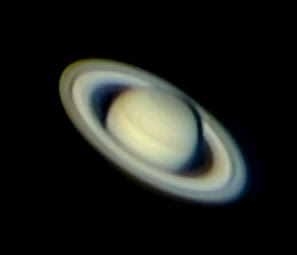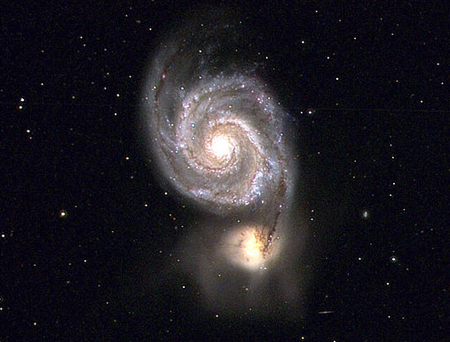When determining what you can do with any telescope, there are some equations which give you an idea of what you can expect from your telescope. These equations are estimates, as they don't take into account the construction details of your particular scope. The better your scope is optically, the closer it will come to these estimates.
But in any case, real, practical observing and the skill of the observer will be more important than numbers turned out of an equation. So all these numbers should be taken with a shaker-full of salt. Like the gas efficiency numbers for a car, they're a basis for comparison but not reality.
Lowest Useful Magnification
The equation for this is the diameter of the telescope divided by the observer's pupil size when open to its widest. Basically it measures how large the image can get before light is lost outside the observer's pupil:
Lowest Useful Magnification = D / p
Where D is the telescope's objective diameter, and p is the pupil diameter. The rule of thumb version is:
D(in inches) x 4 for a 6mm pupil (older adult average pupil)
D(in inches) x 3.6 for a 7mm pupil (younger adult average pupil)
or
D(in mm) / 6 for a 6mm pupil,
D(in mm) / 7 for a 7mm pupil.
With a 60mm telescope, that gives us a minimum useful magnification figure of 9 or 10 powers.
This is tempered by the practicality of getting an eyepiece that's one ninth or one tenth of the focal length of your telescope's objective. If you have a 60mm f/10 telescope that would be about a 60mm focal length eyepiece! Typically the longest eyepiece focal lengths you'll find in a size for your 60mm telescope are about 45mm. This would give the 60mm f/10 a magnification of 13.
A 60mm f/6 telescope has a focal length six times 60mm, or 360mm. A 36mm eyepiece would give 10 power in this telescope. A 42mm eyepiece would give a magnification just under 9 powers.
What does this mean?
What this means is that it's just about impossible to go to powers that are too low for your 60mm telescope to be useful. As a matter of practice, it's not really a problem to go below the "lowest useful magnification" by a bit, as in the example of the 60mm f/6 with a 42mm eyepiece. You'll lose a little light outside the area of your pupil, but the eyepiece will also be a bit more forgiving about how you position your eye next to it. It also adds to the "spacewalk" experience when your eye can get image even when you move around a bit at the telescope.
Low powers are also where you'll typically get the widest field of view from your telescope. They are well suited for looking at dim deep sky objects, concentrating their light into a smaller area in your field of view, making them easier to see in spite of your limited light gathering power.
Minimum Magnification to See Finest Detail
This is a calculation to estimate what magnification you should use to make out the finest detail in well-illuminated objects like planets and the Moon. If you are below this magnification, you're missing some detail, theoretically. If you're above this, the light on dim, marginal objects will be spread out, possibly causing some detail to be lost.
In practice, this is a decent estimate of the highest magnification for the scope for general use, and the highest usable magnification for the scope will be about twice as high with brighter objects.
The calculations assume that the observer can see detail down to about 100 arcseconds without a telescope.
A simple way to calculate it is 100/R, where R is the resolving power of the telescope in arcseconds. For a 60mm scope, R is about 3.0 in practice, as low as about 1.9 in theory. This gives us values from 33 powers to 52 powers.
This result again emphasizes that the 60mm scope is at its best at low powers of magnification. It gives us a practical top magnification for image details at around 70 to 100 powers depending on how good conditions are. Better conditions allow higher powers. The lower powers are the magnification that will give the finest detail on planets, the Moon, in nebulas, and so on. The higher powers are how high you can normally expect to go without losing lots of internal detail. In objects where internal detail is not as important, such as a galaxy where you're trying to find the outer extremities, you can go to lower power to raise surface brightness. Along the Moon's terminator, where contrast is very strong, you can probably still see plenty of detail at higher powers.
Maximum Useful Magnification
This is another useful rule of thumb. It's also based on the aperture of the scope. This is one of the things that causes "aperture fever", where amateur astronomers keep going for larger and larger telescopes. In fact, the contrast of the image will determine what can be seen with the scope and how well it will work with higher levels of magnification as much or more than the aperture. But contrast is tricky to measure, while all it takes to measure aperture is a ruler and the open end of a telescope.
Standard rules of thumb for this figure are as follows:
M = 20 x D(inches) or
M = 0.8 x D (mm)
For a 60mm telescope, this gives us a maximum magnification of about 48 powers. The rule of thumb also states that typical magnification should be about half this value to get maximum brightness and contrast.
Does that mean your scope is useless at powers higher than about 50? No way! This is a rule of thumb more applicable to larger scopes (6 to 30 inches) than it is to smaller scopes. Also, this number will vary dramatically depending on the optical quality of your scope. The highest quality refractors in 60mm aperture can give great detail at over 300 powers under the best conditions. But this isn't too bad a measure for a scope of moderate performance. Basically, while the number it produces is low, it again emphasizes that the best performance for a small scope is at relatively low powers. You'll see more if you use your scope in the way that it works the best.
Theoretical Limiting Magnitude
This is the theoretical dimmest star you can see with your telescope. For your 60mm this is a magnitude of 10.6. The highest quality scopes will outperform this, and poorer scopes won't do this well. My experience is that the contrast of the image the scope gives, and the quality of the sky--how dark the background of the sky is--have the strongest effect on this.
For "extended objects", that is, anything that doesn't have all its light in a single point like a star, the apparent magnitude is a measure of all its light put together. So if you find a galaxy in a catalog that has a magnitude of 10.4, it may well not be visible in your 60mm telescope, even though your scope can theoretically see even dimmer objects. The problem is that the light is spread out over a larger area, so that the light at any point is too dim for the telescope to show it.
Putting It All Together
Upshot for a 60mm telescope, keep your powers low to see the most. Pick bright objects to observe. Get to dark skies if you can. Get the best optics possible, and remember that optical quality doesn't matter at all if you're not working on a good, solid mount that holds the scope on target.
Portability of Java Programming Skills
-
You can program in Java (or are learning to.) That's great! But what else
can you do with those skills? Are you trapped with Java?
Not at all. One of the r...




